In December, the British Museum will reopen Room 33, now known as the Sir Joseph Hotung Gallery of China and South Asia, which has been refurbished and redesigned with new thematic displays and a number of newly displayed objects, several of which have been acquired specifically for the updated space (a phased opening means that the China section opened on 10 November). While Chinese art has been on display in this gallery since its opening in 1914, the British Museum has been acquiring Chinese material since the time of its founding collection, that of Sir Hans Sloane, which entered the museum in the 18th century. Several of Sloane’s Chinese objects are currently displayed in the British Museum’s Enlightenment Gallery and include both oddities and more conventional works of art, in keeping with his collecting of curiosities. The main Chinese collections of the British Museum, however, were developed primarily in the 19th and 20th centuries and are associated with some of the most prominent names in Chinese art collecting from those periods: A.W. Franks, William Cleverly Alexander, Aurel Stein, Percival David, George Eumorfopoulos, and Joseph Hotung, the gallery’s principal benefactor. A study of the collectors and sources of objects that make up the British Museum’s collections illuminates the fascinating history of the British engagement with China and Chinese things, which developed over time in ways that have been reflected in the changing display strategies at the museum.
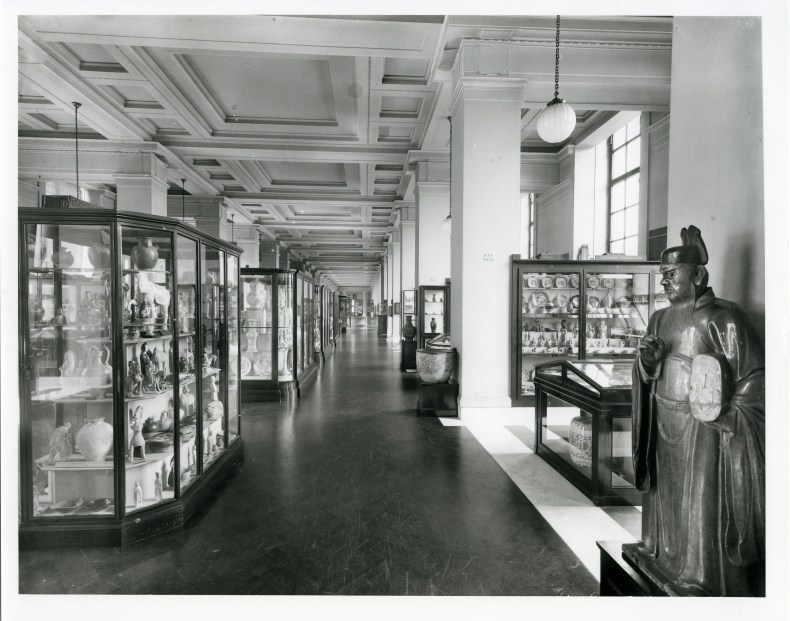
An early display of Chinese objects in the King Edward VII gallery, British Museum (photo: pre-1977)
The foundations for the Chinese collections were laid by Franks, who was keeper of British and medieval antiquities from 1866 to 1896. He acquired a wide range of Chinese, Japanese and Korean objects for the museum, with a particular focus on ceramics, publishing several catalogues on this subject that are important documents of 19th-century British collecting patterns and scholarship. Franks collected for himself as well as for the museum, and in 1866 became a founder member of an influential collectors’ society in London, the Burlington Fine Arts Club (BFAC). Along with fellow founder John Robinson (of the South Kensington Museum), Franks encouraged members of the club to display their objects in regular exhibitions and to donate pieces to the national museums. One such member was William Cleverly Alexander, who was a patron of James McNeill Whistler and active in the Pre-Raphaelite circle – those artists, critics, and designers who played a significant but understudied role in the collecting of Asian art in Britain. Alexander’s interests were typical of this group, in that he was a patron of painters as well as a collector of Asian ceramics, in his case Chinese. In 1920 his daughters donated a significant example to the British Museum on his behalf, the so-called Alexander bowl, a very rare Song dynasty imperial-quality celadon dating to the early 12th century.
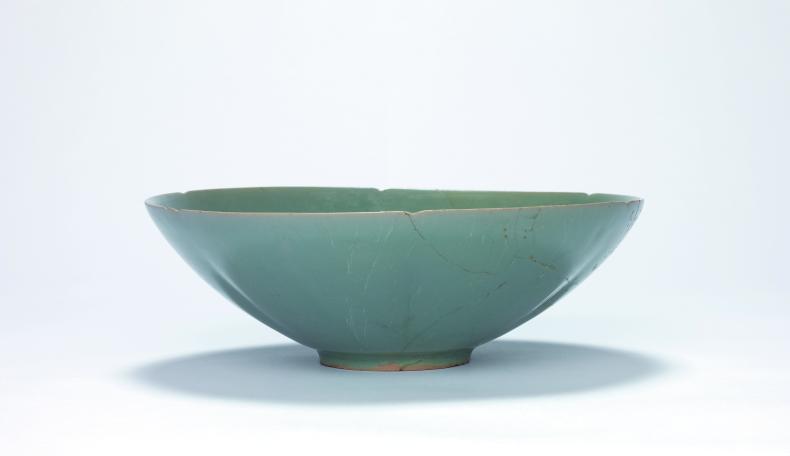
The Alexander Bowl (1100–25), China, Henan prince, Ruzhou, Zhanggongxiang.
British Museum, London
Nine years later, another BFAC member, Percival David, donated another important Chinese ceramic to the museum, a Daoist shrine of the early Ming dynasty, dated by inscription to 1406. At that time, David was a relatively young collector who was slowly building up what would become one of the most important collections of Chinese ceramics in the world. His collection, donated to the University of London in 1950, is now on display in a dedicated gallery in the British Museum. Before that date, he had been actively engaged in what can be described as the London Chinese art world – which included museums, such as the British Museum and the V&A, collectors’ groups such as the BFAC and the Oriental Ceramic Society (OCS, founded in 1921), dealers, and, from 1930, university courses funded by David himself.
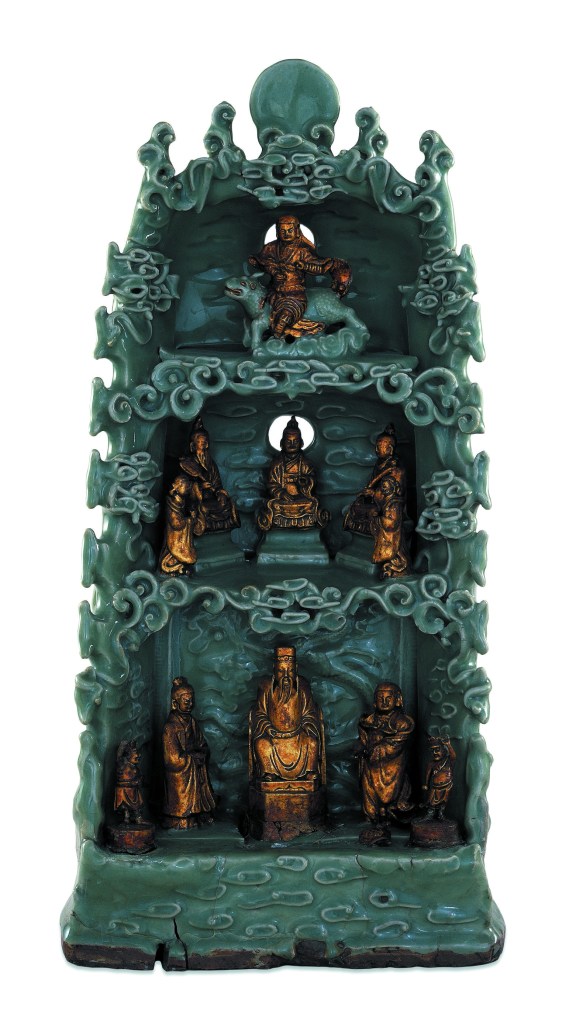
Daoist shrine (dated by inscription to 1406), China, Longquan kilns, Zhejiang province. British Museum, London
The first president of the OCS was George Eumorfopoulos, whose collection of Chinese art was sold to the nation after his death in 1939, with much of it going to the British Museum, including a number of ancient Chinese bronzes and Tang dynasty funerary ceramics (he had sold a large part of an earlier collection to the British Museum and the V&A when he found himself in financial difficulties in 1934). Eumorfopoulos and David were complementary collectors, in that Eumo (as he was known to his friends) concentrated on pre-Yuan dynasty archaeological objects (pre-14th century) whereas David focused his collection not just on ceramics but also those made from the 10th century to the 18th century that were associated with imperial production. The collecting of archaeological material from China only became possible on a large scale from the very late 19th century, when railways were built across north China; ancient tombs were frequently disturbed by the construction and improved transportation meant that previously remote regions could more easily be reached. In addition, from the early 20th century, the scope of scientific archaeology began to expand in Britain and Europe, with Central Asia and China becoming a destination for archaeologists and explorers. The British Museum participated in this, as part of its programme to sponsor archaeological exploration in locations around the world. One such project was the Hungarian explorer Aurel Stein’s visit to western China, in particular the cave temples of Dunhuang in Gansu province, which brought important Buddhist paintings and manuscripts into the British Museum collection in 1919.
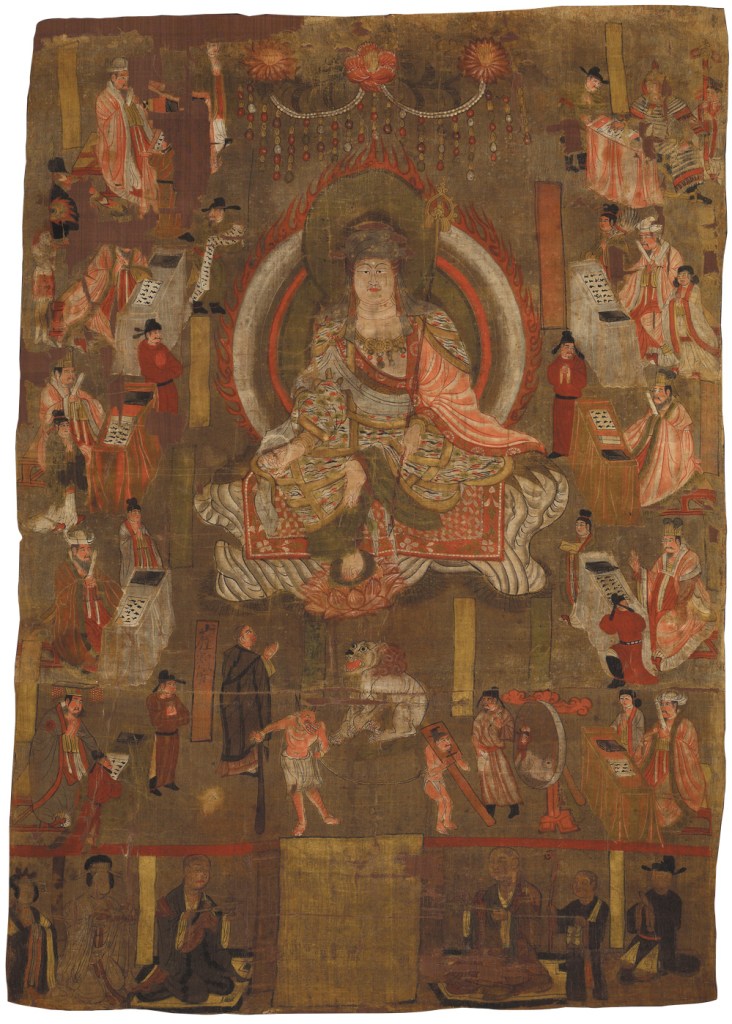
Painting showing Ksitigarbha and the Ten Kings of Hell (10th century), China, Gansu province, Qianfodong, Dunhuang. British Museum, London
Archaeology was also indirectly the catalyst for the acquisition by the museum of another object from a site in China, this time a tomb in Henan province. In the early 1930s, archaeologists from the Academia Sinica (founded in China in 1928) excavated a series of tombs near Anyang, the capital of China in the Shang period (c. 1600–1050 BC). The tombs appeared to have been raided before (and possibly during the excavation) and several objects sourced from there came on to the market, including an important inscribed ancient bronze from the Western Zhou period (1046–771 BC) which is known as the Kang Hou Gui. The vessel of gui form has an inscription that records the gift of territory to an associate of the Kang Hou (Duke of Kang) after the defeat of a rebellion by the Shang. It is an important document of military activity in early China and a representative example of the cast bronze style from that period. It is therefore historically and art-historically significant, but it also has an interesting later provenance. The gui was owned by Major-General Sir Neill Malcolm, a prominent member of the British army who had travelled to China and Tibet in 1896, and upon retirement became president of the China Society and Chair of the Universities China Committee, which was created in 1925 as a grant-giving body funded by reparations payments. Malcolm, also a member of the OCS, built up a fairly modest collection of Chinese art that was inherited by his son, Captain Dugald Malcolm, who developed his own collection from 1936 onwards. Dugald Malcolm is often accredited with ‘collecting’ the Kang Hou Gui but it was originally acquired by his father.
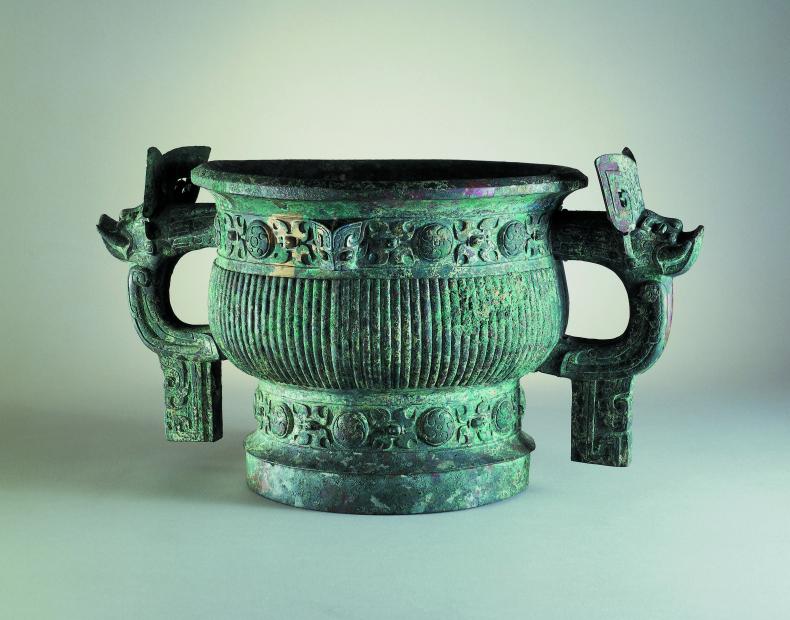
The Kang Hou Gui (11th century BC), China, Henan province. British Museum, London
The Kang Hou Gui was displayed in 1935 in the International Exhibition of Chinese Art at the Royal Academy, a major event in the history of the collecting and display of Chinese art in Britain. A number of the objects in the British Museum today, including several hundred then owned by Percival David, were featured in that exhibition, which brought Chinese art in all its glory to a wide audience for the first time. David was the exhibition’s instigator and director, but he was aided in its organisation by fellow members of the OCS, including Malcolm, Eumorfopoulos and the British Museum’s recently appointed keeper of Oriental antiquities and ethnography, R.L. Hobson. Studies of this exhibition have demonstrated its impact on the historiography of Chinese art, on this field of collecting in Britain, and on its exhibition history, but it should also be recognised as the product of private collectors’ efforts to popularise and encode their definition of ‘Chinese art’, which used museums and exhibitions as a vehicle for the expression of their interests.
As a record of what collectors in Britain owned at that time, the 1935 exhibition is fascinating. It is clear that while archaeology provided a significant source for pre-Ming objects in the first quarter of the 20th century, military activity in China was also important as this was among the ways that Britain engaged with China in the 19th and early 20th centuries. In the 1860s, for example, the well-known events surrounding the sacking of the Summer Palace in Beijing brought numerous Chinese imperial objects of the Ming and Qing periods (15th–19th centuries) on to the market for the first time, and collectors were almost universal in their admiration for what was revelatory new material to those with no direct experience of China. Other events, such as the so-called Boxer Rebellion in 1899, also enabled British military personnel to acquire Chinese art objects. One of the most famous Chinese paintings in existence, now in the British Museum collection, most likely made its way to Britain through this avenue, and possibly came from the Summer Palace; the so-called Admonitions Scroll was acquired by Captain Clarence A.K. Johnson in 1899 and sold to the British Museum in 1903. Thought to be a work dating to the 5th–early 7th century, it is one of the earliest surviving Chinese figure paintings and was owned by the Qianlong emperor (r. 1735–95).
Other paintings in the museum’s Chinese collections have a very different provenance. In 1998, for example, it acquired a rare painting dated to the 14th century that may be the first Chinese scroll painting to come to Britain, the Fascination of Nature by Xie Chufang. This painting, which is about to go on display in the China gallery for the first time, was acquired with the aid of the National Art Collections Fund (today the Art Fund), which has itself played an important role in collecting Chinese art since its foundation in 1903 by members of the BFAC. The painting’s previous owner was a rare book dealer who had acquired the collection of a major 19th-century donor to the British Museum’s prints and drawings department, Sir Thomas Phillipps, one of the most important historical collectors of manuscripts in Britain. The connection to prints and drawings is indicative of the nature of Asian painting collecting in Britain, and is related to how the British Museum has itself classified Asian painting – not least when a sub-department of Oriental prints and drawings was created in 1913 under the keepership of Laurence Binyon.
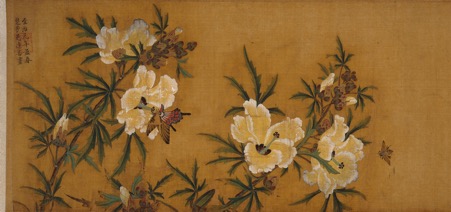
Fascination of Nature (detail; dated by inscription to 1321), Xie Chufang. British Museum, London
Indeed, most of the Chinese and Japanese paintings in the British Museum came into the collection as ‘prints and drawings’, rather than Chinese or Japanese antiquities, in keeping with the reception and classification of such material that persisted at the museum until relatively recently. The Admonitions Scroll, for example, was acquired for the museum by the then keeper of prints and drawings, Sidney Colvin. Phillipps had probably acquired his Chinese painting through his interest in manuscripts and drawings, and may have purchased it with the rest of a larger collection of material from the Alexander Davison sale at Christie’s in 1816. The painting features an inscription and date applied by what appears to be its first British owner, William Butler, a private teacher and school master, who wrote his name and ‘1797’ inside the original cover. Thus the worlds of prints and drawings, manuscripts and Chinese painting intersected around and through the British Museum.
The classification of Chinese paintings as prints and drawings in the British Museum suggests that this type of Chinese art was somewhat less popular with collectors in Britain, who traditionally preferred ceramics. In fact, several prominent collectors, including George Eumorfopoulos, noted that ceramics were their point of entry into Chinese art. For 19th-century collectors, Chinese ceramics were widely seen to complement other types of artworks, such as paintings by the likes of D.G. Rossetti and Whistler, who used Chinese (and Japanese) ceramics as props. In the 20th century, ceramics became even more prominent through exhibitions and the founding of the OCS. The BFAC staged exhibitions of Chinese ceramics in both the late 19th century and the early 20th century, which created new audiences for Chinese objects – most notably, studio potters and modernists. Like 19th-century collectors such as Alexander, a number of 20th-century collectors of Chinese art intersected with the world of artists, makers and critics, but now this included ceramic practitioners. Eumorfopoulos, for example, was a patron of the potter Charles Vyse.
Such connections have continued, and are reflected in a very recent acquisition by the British Museum that will be included in its new displays. In 2016 a classic black-glazed stoneware bottle from the Jin-Yuan period (13th century) was bequeathed by Francis Golding, a leading architecture and design consultant in London. He had acquired the bottle from the sale at Sotheby’s of the collection of a prominent Swedish collector, Carl Kempe, and it had been on display in the 1935 exhibition of Chinese Art, providing a further connection with the art nexus that shaped Chinese art collecting in Britain in the 19th and 20th centuries.
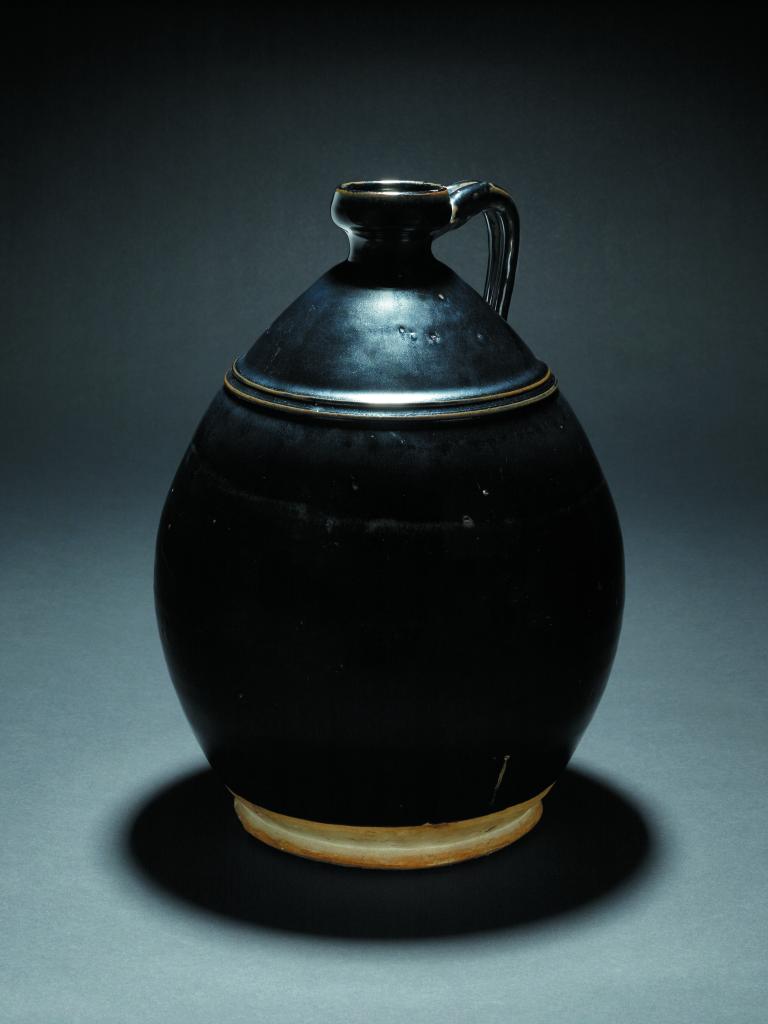
Bottle (13th century), China, Shanxi province. British Museum, London
This bottle, along with the Kang Hou Gui, the painting by Xie Chufang, and the paintings, Daoist shrine, and Song dynasty celadon collected by Aurel Stein, Percival David, and William Cleverly Alexander respectively, will be on display in the new China gallery in the British Museum. These objects and their collectors demonstrate that while the definition of ‘Chinese art’ in Britain has changed to some extent over the last 150 years – mainly by becoming ‘Chinese’ rather than a more broadly conceived ‘Oriental’ – collecting taste has not changed quite so dramatically. That the new display is grounded in these familiar objects confirms this, but the gallery’s new name – ‘The Sir Joseph Hotung Gallery of China and South Asia’ replacing its former identity as ‘The Joseph E. Hotung Gallery of Oriental Antiquities’ – also demonstrates that the interpretation of ‘Chinese art’ continues to evolve: the concept of the renovated gallery centres on a geographical and cultural China, rather than a selection of its things. In addition, Chinese collectors and contemporary artists and makers are represented, reflecting a major demographic shift in Chinese art collecting towards Chinese collectors. It has been argued that Chinese art is not Chinese, in the sense that it is a category of art that was invented elsewhere – but now this idea of Chinese art has been reappropriated in China, and by Chinese collectors, who may ultimately reshape British collections in the future.
From the November 2017 issue of Apollo. Preview and subscribe here.
Unlimited access from just $16 every 3 months
Subscribe to get unlimited and exclusive access to the top art stories, interviews and exhibition reviews.

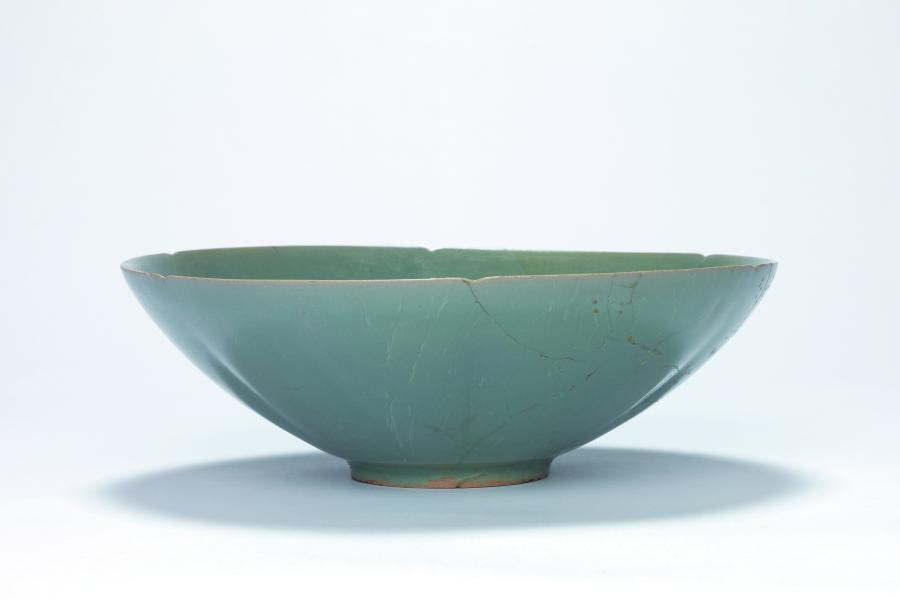









![Masterpiece [Re]discovery 2022. Photo: Ben Fisher Photography, courtesy of Masterpiece London](http://www.apollo-magazine.com/wp-content/uploads/2022/07/MPL2022_4263.jpg)
It’s time for the government of London to return to its rightful home